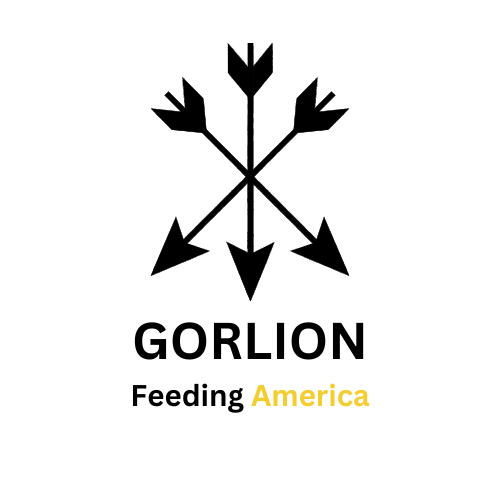White Paper: Eradicating the Customer Acquisition Barrier

For Agricultural Producers & Processors
Executive Summary
In the ever-evolving landscape of the agricultural industry, producers and processors face unique challenges in acquiring and retaining customers. The market is fiercely competitive, and customer expectations continue to rise. To navigate these challenges, agricultural entities must adopt innovative strategies that not only break down the customer acquisition barrier but also pave the way for sustainable growth.
This white paper delves into the key challenges faced by agricultural producers and processors when it comes to acquiring customers. It outlines a holistic approach to eradicating these barriers, incorporating modern technologies, sustainable practices, and strategic partnerships. By embracing these strategies, agricultural businesses can position themselves for long-term success in a dynamic and demanding market.

Introduction
The Evolving Agricultural Landscape
The agricultural industry is undergoing a profound transformation. Shifting consumer preferences, advancements in technology, and an increasing emphasis on sustainability are reshaping the way agricultural products are produced, marketed, and consumed. In this evolving landscape, the ability to acquire and retain customers is paramount for the success of agricultural producers and processors.
The Customer Acquisition Challenge
Despite the opportunities presented by this changing landscape, agricultural businesses often encounter significant challenges in acquiring new customers. These challenges include rising customer expectations, intensified competition, and the need to differentiate through sustainability practices. To thrive in this environment, agricultural entities must explore innovative strategies that address these barriers head-on.

The Customer Acquisition Barrier
Understanding the Obstacles
- Rising Customer Expectations: In today’s market, customers expect more than just quality products. They seek transparency, traceability, and ethical practices. Meeting these expectations is a considerable challenge for agricultural businesses.
- Competition in the Digital Age: The digital revolution has opened up new avenues for marketing and sales, but it has also intensified competition. Keeping up with digital marketing trends and e-commerce strategies is essential.
- Sustainability as a Differentiator: Sustainability practices are no longer optional; they are a competitive advantage. Agricultural businesses that fail to embrace sustainable practices may find it difficult to attract environmentally-conscious consumers.

Eradicating the Barrier
To eradicate the customer acquisition barrier, agricultural businesses must adopt a multi-faceted approach that integrates technology, sustainability, and strategic partnerships.
Leveraging Technology
Eradicating the Barrier
To eradicate the customer acquisition barrier, agricultural businesses must adopt a multi-faceted approach that integrates technology, sustainability, and strategic partnerships.
Leveraging Technology
Data-Driven Decision-Making
- Big Data Analysis: Utilize data analytics to gain insights into customer preferences, market trends, and supply chain efficiency.
- CRM Systems: Implement Customer Relationship Management (CRM) systems to manage customer interactions and improve engagement.
E-Commerce and Digital Marketing
- Online Marketplaces: Explore e-commerce platforms and online marketplaces to expand market reach and facilitate direct-to-consumer sales.
- Digital Advertising: Invest in targeted digital marketing campaigns to reach potential customers effectively.
Embracing Sustainable Practices
Organic and Non-GMO Offerings
- Certifications: Obtain organic and non-GMO certifications to appeal to health-conscious and ethically-minded consumers.
- Identity Preservation Programs: Implement programs that ensure the traceability and integrity of sustainable products, building trust with customers.
Cultivating Strategic Partnerships
Collaborating with Market Intermediaries
- Distributors and Aggregators: Partner with distributors and aggregators to access wider distribution networks and reach new markets.
- Retail Chains: Forge relationships with retail chains that prioritize sustainability, creating opportunities for product placement.
Strengthening Supply Chain Relationships
- Producer Cooperatives: Join or form producer cooperatives to collectively market products and gain leverage in negotiations.
- Supplier Collaboration: Collaborate closely with suppliers to ensure a steady and sustainable supply of raw materials.
Case Study

Case Study: Accelerating Growth with Strategic Partnerships
One of the key success stories in the agricultural industry involves a soybean supplier that partnered with Gorlion Corporation. Within the first 8 months of their marketing and trading relationship, this supplier experienced an extraordinary surge in demand for their non-GMO and organic soybeans. Orders for their products from Gorlion exceeded 870,000 bushels, signaling a remarkable achievement.
This outstanding success can be attributed to several factors:
- Market Access: By collaborating with Gorlion, the soybean supplier gained access to a vast network of food and beverage manufacturers. This expanded market presence translated into increased sales opportunities.
- Effective Marketing: Gorlion’s innovative marketing strategies, including AI-driven campaigns and targeted promotions, played a pivotal role in creating awareness and demand for the supplier’s soybeans.
- Quality Assurance: Gorlion’s commitment to quality and sustainability assured customers of the superior quality of the soybeans, further enhancing their desirability.
This case study exemplifies how Gorlion Corporation empowers agricultural suppliers to accelerate growth, access new markets, and achieve remarkable results within a short timeframe.

Conclusion
In the dynamic and competitive landscape of the agricultural industry, eradicating the customer acquisition barrier is essential for long-term success. Agricultural producers and processors must adapt to changing consumer expectations, intense competition, and sustainability requirements. This white paper has outlined a comprehensive approach to addressing these challenges.
By leveraging technology for data-driven decision-making, embracing sustainable practices, and cultivating strategic partnerships, agricultural entities can unlock opportunities for growth and customer acquisition. Success stories like Gorlion Corporation and sustainable agriculture cooperatives demonstrate the potential of these strategies.
The Path Forward: Eradicating the Customer Acquisition Barrier
As the agricultural industry continues to evolve, those who proactively address the customer acquisition barrier will thrive. The path forward involves a commitment to innovation, sustainability, and collaboration. By adopting these principles and taking bold steps, agricultural businesses can secure their position in a competitive market and build a sustainable future.
About Gorlion Corporation
Gorlion Corporation is a pioneering force in the agricultural industry, specializing in the supply of identity-preserved organic and non-GMO Ag Commodities. With a commitment to quality, sustainability, and innovation, Gorlion has emerged as a trusted partner for producers and processors alike. By eradicating the customer acquisition barrier through modern strategies, Gorlion continues to shape the future of agriculture.

